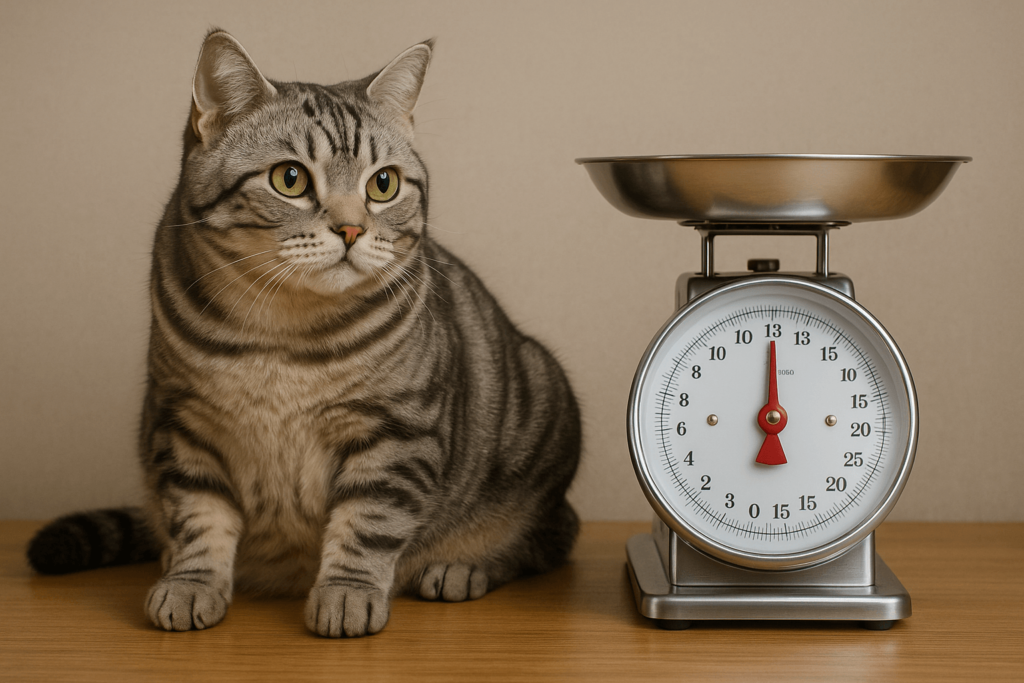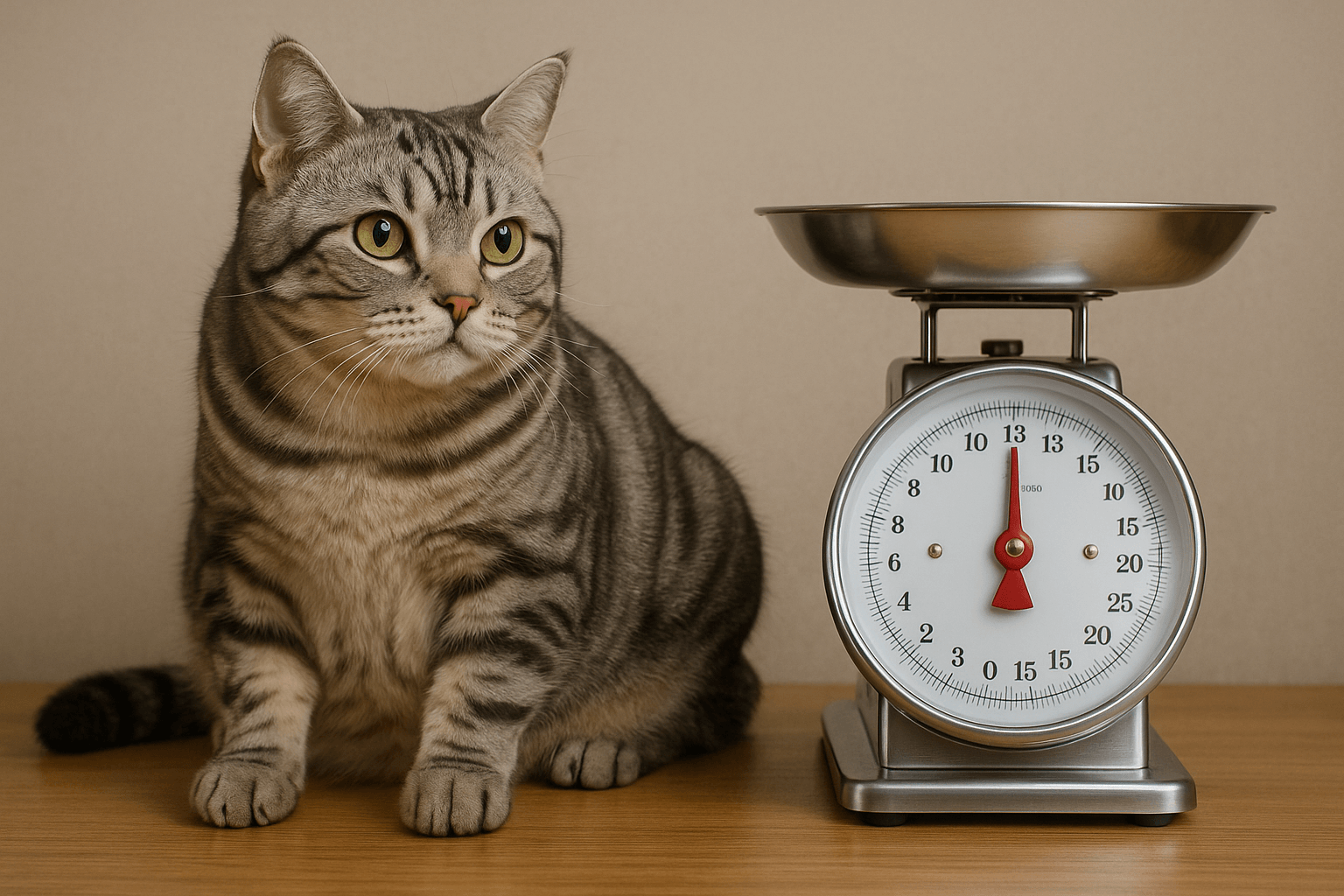American Shorthair Cat Weight: What’s Normal—and When to Worry
The American Shorthair is a sturdy, graceful companion with a timeless appeal. Known for their calm demeanor and robust build, these cats often carry a solid, muscular frame—but what’s the right weight? Too light, and you risk malnutrition. Too heavy, and you invite serious health risks. Understanding the ideal American Shorthair cat weight isn’t about aesthetics—it’s about longevity, mobility, and quality of life.
Why American Shorthair Weight Matters More Than You Think
A cat’s weight is one of the clearest indicators of their internal health. For American Shorthairs, whose genetics favor a strong, athletic build, even small deviations can signal big problems.
Metabolic Health:
Excess weight strains the liver, increases insulin resistance, and raises diabetes risk—common in this breed due to their efficient metabolism.Joint Stress:
Their muscular frame isn’t designed to carry extra pounds. Obesity accelerates arthritis, especially in hips and spine.Grooming Ability:
Overweight cats struggle to reach their back and tail, leading to matting, skin infections, and odor.Life Expectancy:
Studies show overweight cats live 2–5 years less than cats at ideal weight. This breed can live 15–20+ years—with proper weight, they thrive.Behavioral Changes:
Lethargy, reduced play, or reluctance to jump aren’t just “getting older”—they’re red flags tied directly to weight gain.
Your American Shorthair’s weight isn’t just a number—it’s a mirror of their daily care, diet, and overall well-being.

Ideal American Shorthair Cat Weight by Gender and Age
There’s no single “perfect” weight. American Shorthairs vary based on genetics, bone structure, and muscle mass. Here’s what healthy looks like across life stages:
Kittens (Up to 6 Months):
Should gain 0.25–0.5 lbs per week. A 4-month-old typically weighs 4–6 lbs—small but growing steadily.Adolescents (7–12 Months):
Reach near-adult size. Ideal range: 7–10 lbs. Watch for rapid weight gain from overfeeding or spay/neuter changes.Adult Females (1–10 Years):
Healthy weight: 8–12 lbs. Leaner than males, with a more refined frame. Muscle tone should be visible under fur.Adult Males (1–10 Years):
Heavier and more muscular. Ideal range: 11–15 lbs. Some large-boned males may reach 16 lbs—but only if lean, not chubby.Seniors (11+ Years):
Metabolism slows. Ideal weight: 9–13 lbs. Weight loss here is more dangerous than slight gain—muscle wasting is a silent threat.
Always assess body condition—not just the scale. A cat at ideal weight should have a visible waist, ribs you can feel with light pressure, and no belly sag.
Check this guide 👉British Shorthair Cat Lifespan: Best 7 Expert Tips!
Check this guide 👉British Shorthair Cat Price: Best 7 Expert Tips!
Check this guide 👉Domestic Shorthair Cat vs American Shorthair: Best 7 Tips!
| Sign of Healthy Weight | Sign of Overweight/Obese |
|---|---|
| Waist visible when viewed from above | No waist—body appears round or barrel-shaped |
| Ribs easily felt with light pressure | Ribs buried under thick fat layer |
| Abdomen tucks up slightly behind ribs | Belly hangs low or swings when walking |
| Coat lies smooth and clean | Greasy, matted, or unkempt fur due to grooming difficulty |
| Active, playful, jumps easily | Lethargic, avoids jumping, tires quickly |
How Diet Shapes American Shorthair Weight
This breed has a strong appetite and a slow metabolism. Left unchecked, they gain weight easily—even on “premium” food. Your feeding choices are the #1 factor.
Portion Control Is Non-Negotiable:
Free-feeding leads to obesity. Measure meals twice daily—even if your cat begs.Avoid High-Carb Dry Food:
Many dry foods are 30–40% carbs. Cats don’t need them. Opt for high-protein, grain-free formulas.Wet Food Supports Weight Management:
Higher moisture and protein promote fullness with fewer calories. Feed at least 50% wet food.Treats Add Up Fast:
One tuna treat = 20+ calories. Limit to 10% of daily intake. Use kibble from meals as rewards.Spay/Neuter Adjustments Are Critical:
Metabolism drops 20–30% after surgery. Reduce portions by 20% immediately post-op.
Don’t assume “they’re just big.” Many American Shorthairs are mislabeled as “large” when they’re simply overweight.
The Hidden Dangers of an Overweight American Shorthair
Weight gain doesn’t just make your cat look pudgy—it triggers a cascade of life-threatening conditions.
Diabetes Mellitus:
Obesity is the leading cause. Symptoms: increased thirst, frequent urination, lethargy.Arthritis and Joint Degeneration:
Extra weight crushes joints. Your cat may stop jumping, climb stairs slowly, or limp.Hepatic Lipidosis (Fatty Liver Disease):
A life-threatening condition triggered by sudden weight loss or prolonged anorexia—common in obese cats who stop eating.Respiratory Strain:
Extra fat around the chest restricts breathing. Your cat may pant or breathe noisily after minimal activity.Reduced Immune Function:
Fat tissue produces inflammatory proteins, making your cat more vulnerable to infections and slower to heal.
An overweight American Shorthair isn’t just “cute.” They’re in silent, systemic distress.
How to Help an Overweight American Shorthair Lose Weight Safely
Weight loss must be gradual—no crash diets. Cats can develop fatal liver disease if they lose weight too fast.
Consult Your Vet First:
Rule out thyroid disease, diabetes, or other medical causes before starting a diet.Switch to Prescription Weight-Loss Food:
Formulas like Hill’s Metabolic or Royal Canin Satiety are designed for cats needing slow, steady loss.Feed Smaller, More Frequent Meals:
3–4 small meals a day prevent hunger spikes and keep metabolism active.Use Puzzle Feeders:
Slows eating, increases mental stimulation, and mimics hunting behavior.Track Progress Weekly:
Weigh every 7 days. Aim for 0.5–1% of body weight lost per week. That’s about 0.1–0.2 lbs weekly for a 12-lb cat.
Patience is everything. A 6-month weight-loss journey is far healthier—and safer—than a 3-week crash.
Preventing Weight Gain in Your American Shorthair: Long-Term Strategies
Prevention is always easier—and kinder—than correction. Build habits that last a lifetime.
Never Free-Feed Dry Food:
Even “light” formulas can lead to overconsumption. Use timed feeders or manual portions.Prioritize Protein, Not Calories:
Choose foods where meat is the first 3 ingredients. Avoid “meat by-products” or filler grains.Daily Play Sessions:
10–15 minutes of wand play twice daily keeps muscles engaged and energy balanced.Monitor Litter Box Habits:
Less activity = slower digestion. Watch for constipation or infrequent stools.Annual Weight Checks:
Bring your cat to the vet every year for a body condition score—not just a weight number.
Your American Shorthair didn’t choose to be heavy. You can choose to help them stay lean, active, and vibrant.
Common Myths About American Shorthair Weight
Misinformation leads to poor decisions. Let’s debunk the biggest myths once and for all.
Myth: “They’re supposed to be heavy—they’re a muscular breed.”
True, they’re muscular—but muscle is dense, not soft. Fat is fat. A 16-lb cat with no waist is not “big,” it’s obese.Myth: “Cats know when to stop eating.”
False. Domestic cats have no evolutionary need to self-regulate. They’ll eat until the bowl is empty.Myth: “If they’re active, they can’t be overweight.”
Activity doesn’t cancel out excess calories. A playful 14-lb cat is still at risk for joint and metabolic disease.Myth: “Dry food is better for teeth.”
No. Dental health comes from brushing, not kibble. Dry food often contains more carbs, which fuel weight gain.Myth: “I’ll just cut back on food if they gain weight.”
Sudden reduction risks hepatic lipidosis. Always transition slowly and under veterinary guidance.
Stop trusting myths. Start trusting measurements, vet advice, and observation.
FAQ: American Shorthair Cat Weight
What is the average weight of an adult American Shorthair?
Females: 8–12 lbs. Males: 11–15 lbs. Some large males may reach 16 lbs—if lean and muscular.
Is 14 lbs too heavy for my female American Shorthair?
Possibly. If she has no waist, no rib definition, or struggles to jump, she’s overweight—even if within “normal” range.
Can I feed my American Shorthair human food to help them gain weight?
Never. Human food is often too fatty, salty, or toxic. Use vet-approved high-calorie cat supplements instead.
Why is my American Shorthair losing weight suddenly?
This is urgent. Causes include hyperthyroidism, kidney disease, cancer, or dental pain. See your vet immediately.
How do I know if my cat is just big-boned or actually overweight?
Use the body condition score: feel for ribs, look for a waist, check for belly sag. A vet can confirm with a physical exam.
Your Cat’s Weight Is Your Responsibility—And Your Gift
An American Shorthair’s strength isn’t just in their muscles—it’s in their resilience. But resilience doesn’t mean invincibility. A cat who can’t jump onto the couch, who sleeps all day, who no longer grooms properly—this isn’t aging. This is suffering in silence.
You hold the key: the right food, measured portions, daily play, and annual checkups.
You don’t need to be perfect.
You just need to be consistent.
Canned Pumpkin for Cat Diarrhea: Best 7 Expert Tips! Natural remedy to firm stools, soothe upset bellies, and support gut health safely.
Can a Cat Give You Scabies? Best 7 Expert Tips! Discover the truth about feline mites, human skin risks, and how to protect yourself—without panic.
Cat Flea vs Human Flea: Best 7 Expert Tips! Discover the truth about bites, species, and how to eliminate infestations for good.
Weird Cat Behaviors: Best 7 Expert Tips! Discover why cats do strange things—and how to understand, not punish, their instincts for a happier home.





